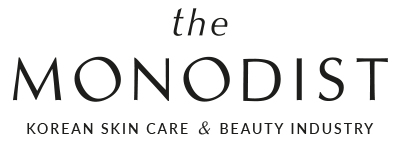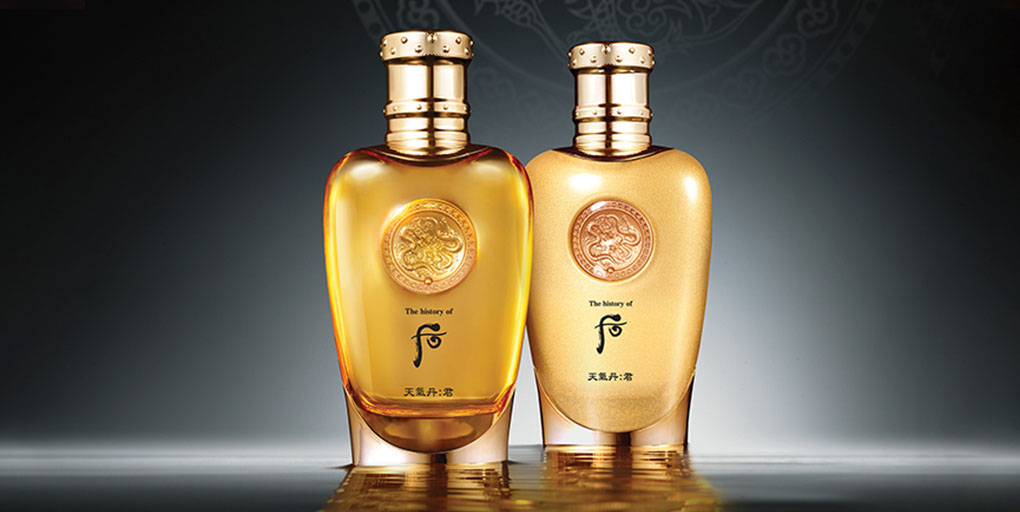
The History of Whoo – Cheongidan Gun line

The History of Whoo’s Cheongidan Gun (천기단:군) is a premium anti-aging skincare line designed to reinvigorate and rejuvenate men’s skin.
The design of the bottles in the range was inspired by Gollyongpo (곤룡포), the dragon robe worn by Kings during the Joseon Dynasty.
Disclaimer: I personally translated the majority of facts and contents in this article from original Korean sources, so I kindly ask you to credit my work if you’re planning to use any of the information included in this guide.
Many concepts mentioned in this guide are based on Oriental Medicine principles, for a better understanding please refer to the introduction to Traditional Korean Medicine on this website. It’s important to stress out that there is no correspondence between Oriental Medicine organs and Western anatomy so capitalised names in this article shouldn’t be interpreted in the Western medical sense.
⬥ Recommended for
- Men over 40
- Deep wrinkles
- Combination skin and mild dry skin
- Loss of elasticity
- Weakened skin
- Dull and tired-looking complexion

Main Ingredients:
The Cheongidan Gun line helps restore vitality and strength to men’s skin in relation to aging.
In Oriental Medicine, the aging process is considered the consequence of the progressive depletion of Essence (정 “Jeong” in Korean, 精 “Jing” in Chinese ).
According to this theory, each person has both a congenital essence (a fixed amount inheritated at birth from their parents) and an acquired essence obtained from food and drinks. Both types of essence are stored in the Kidney and they provide the energetic basis for growth, development and all living activities.

When a person grows old, they gradually consume all their available essence until exhaustion, which coincides with death. Essence and Qi (vital energy) have an interdependent Yin/Yang relationship: Essence is the material basis of existence that is constantly transformed to release Qi, while Qi transforms food to nourish Essence.

In particular, it’s believed that this depletion of Essence (an in turn, Qi) develops following predictable periodical cycles (“life cycles”), where each cycle is defined by specific physiological changes and patterns.
The characteristics of each life cycle are described in the first chapter of the Hwangjenaegyeongsomun (in English “The Yellow Emperor’s Classic of Internal Medicine“), a Chinese medical text considered the foundation of Oriental Medicine.
There are 7 stages of a woman’s life, with each cycle changing at an interval of 7 years, whereas men have 8 life cycles, with each cycle changing at an interval of 8 years. The body is considered in its optimal state when it reaches the Fourth Cycle (age 28 for women, age 32 for men), from the Fifth Cycle onward (age 35 for women, age 40 for men), the body starts to gradually decline and exhibit the signs of aging.
Cheongidan Gun is an anti-aging skincare line based on this theory. It aims to restore the natural balance of Qi and Essence and slow down the aging process.
All products in the Cheongidan Gun line contain the premium ingredient Natural Cheonjong Wild Ginseng and Samyangchibeob (삼양치법, 三陽治法), a blend of 3 precious herbal ingredients that help replenish Yang Qi and, in turn, reinvigorate men’s skin.
In Oriental Medicine, Yang represents the energy that is responsible for warming and activating bodily functions. Symptoms of Yang deficiency include excess cold, pale complexion, sweating, oedema and generalised weakness.
Samyangchibeob is composed of: Deer Antlers, Lingzhi and Cordyceps Millitaris.
⬥ Natural Cheonjong Wild Ginseng (천종산삼, 天種山蔘)
Panax Ginseng is one of the most expensive Hanbang herbs. Ginseng is also known as “Shincho” (신초, 神草), meaning “God’s Herb”, and in Oriental Medicine it’s commonly used to replenish Qi (“tonify Qi”) across the Five Organs (오장, 五臟).
Wild Ginseng (Panax Ginseng Meyer cv. Silvatica) and Cultivated Ginseng present significant differences, both in terms of market price, morphology and of general properties. In fact, Wild Ginseng was shown to contain at least 10 times the amount of active compounds of Cultivated Ginseng1. This enhanced effectiveness, along with its natural scarcity and difficult availability, make Wild Ginseng one of the most precious herbal remedies in Oriental Medicine.
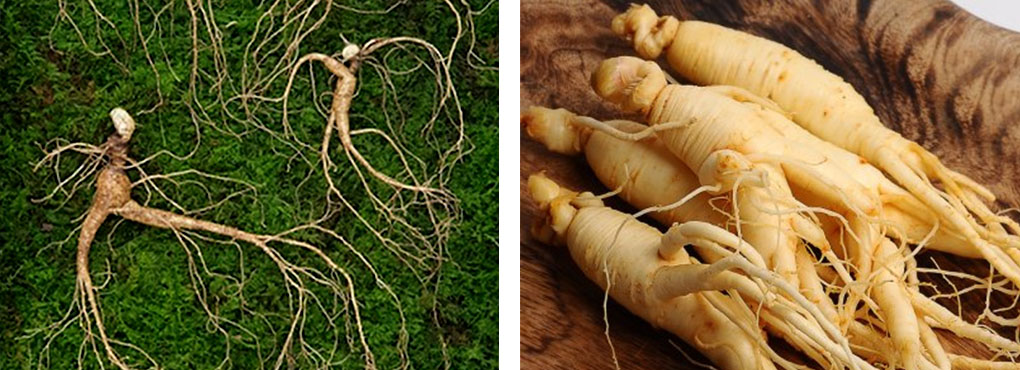
Different morphological characteristics of Wild Ginseng (sx) and Cultivated Ginseng (dx). (source: YTN)
Due to the scarcity of the plant, many Wild Ginseng plants currently on the market are obtained through human intervention. This type of Wild Ginseng is called “Wild-Simulated Ginseng” and results from humans planting ginseng seeds in an environment where Wild Ginseng usually grows, allowing the plant to develop as naturally as possible.
Wild-Simulated Ginseng is known to contain more active ingredients than Cultivated Ginseng but not as much as real Wild Ginseng, and for this reason the market price of Wild-Simulated Ginseng is slightly more accessible2.
“Natural Cheonjong Wild Ginseng” refers to the most precious variety of Wild Ginseng: plants that grow without any human intervention in an optimal natural environment for at least 5 generations3.

In Oriental Medicine, “Daodi” is a term that indicates medicinal herbs with the highest pharmacological properties, grown in specific geographical areas with specific natural conditions and being harvested and processed following specific standards. “Natural Cheonjong Wild Ginseng” describes Korean Wild Ginseng grown in a Daodi region for at least 5 generations.
In particular, the Ginseng used in the Cheongidan Gun line is a 35 year old root that grows in the steep valleys of Gangwon-do, a Korean province renowned for its high mountains.
Very limited amounts of “Natural Cheonjong Wild Ginseng” can only be collected once a year from May to September, the time of the year when nature is at its peak, making the ingredient even more rare. Among all varieties of Panax Ginseng, “Natural Cheonjong Wild Ginseng” is the one with the highest concentration of active principles and the best medicinal efficacy4.
⬥ Deer Antlers (녹용, 鹿茸)
Deer Antlers are naturally rich in collagen and amino acids. In Oriental Medicine the ingredient is commonly used to improve symptoms of aging because it helps tonify Qi and Blood. and, in turn, reinvigorate the body. Deer Antlers help stimulate skin regeneration, replenish skin nutrients and relieve dryness.
⬥ Lingzhi (영지, 靈芝)
Lingzhi, also known as “Mushroom of Immortality”, is a woody mushroom highly regarded in Oriental Medicine. The mushroom is traditionally used to replenish Qi (vital energy) and nourish Blood, meaning it improves circulation and delivery of nutrients across the body.
⬥ Cordyceps Militaris (동충하초, 冬蟲夏草)
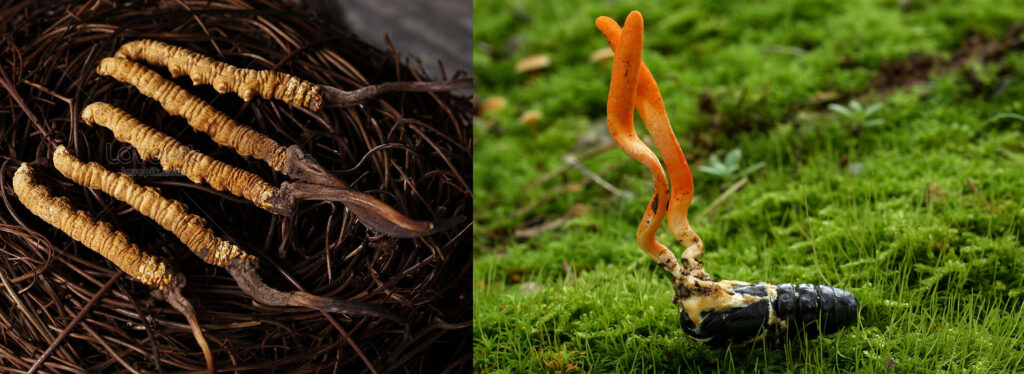
Cordyceps Militaris is a parasitic fungus used in Oriental Medicine for its wide range of pharmacological effects, including: anti-tumoral, immunomodulatory, anti-inflammatory and reinvigorating properties. Much like Wild Ginseng, it’s a naturally scarce ingredient, which lead it to become the world’s most expensive fungus, with prices going up even to $140,000 per kg5. It is said that numerous Chinese leaders, from ancient emperor Qin Shi Huang to Yang Guifei enjoyed the miracles properties of this mushroom6.

Products:
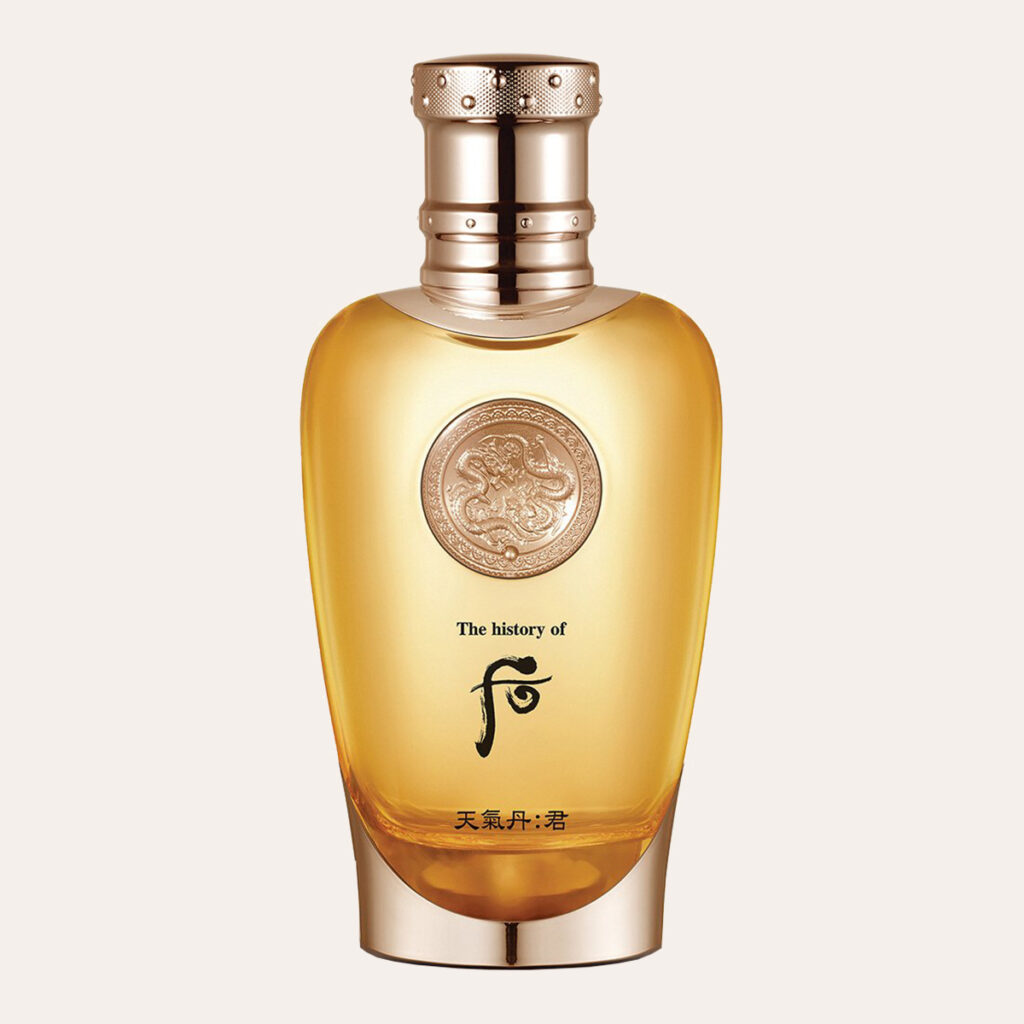
Cheongidan Gun Hwa Yang Skin
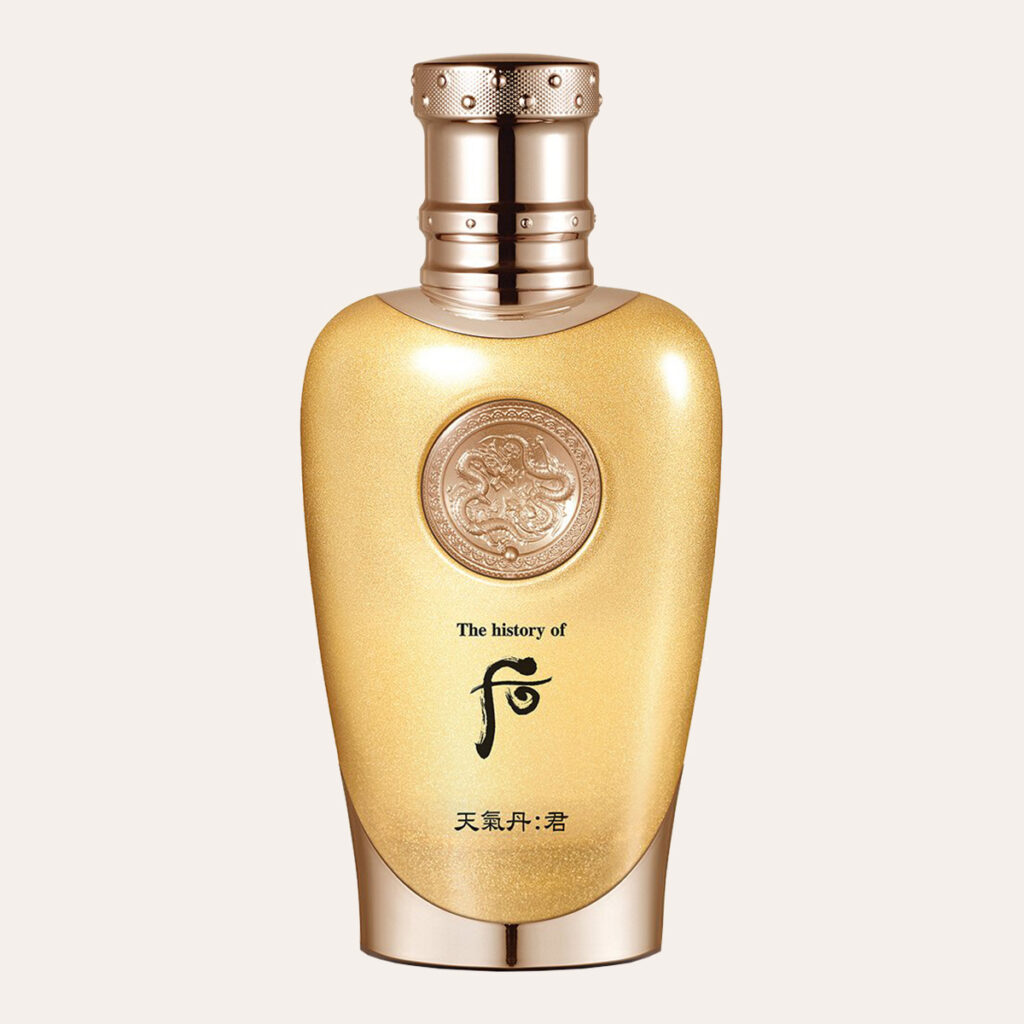
Cheongidan Gun Hwa Yang Lotion
⬥ Recommended order of use
- Cheongidan Gun Hwa Yang Skin
- Cheongidan Gun Hwa Yang Lotion

Shop:
⬥ International Retailers
Make sure to check out the Discount & Coupons page to access exclusive offers for major Korean skincare retailers.
⬥ Korean Retailers

Notes:
1. Jeong H. (2009) 인삼ㆍ산양삼ㆍ자연산 산삼의 ginsenoside 함량 분석 및 홍삼화 후 성분변화 비교. 상지대학교 학술정보원.
2. 대한민국 산림청. (2020). 임업 및 산촌 진흥촉진에 관한 법률, 제2조.
3. 이명동. (2006). “산삼의 종류와 복용법.”
4. 경남일보. (2018). “[농업이야기]천종산삼(天種山蔘)장영호(경남도농업기술원 약용자원연구소장).” 경남일보
5. Hou, David Anderson, Chia-Yi. (2021). “The World’s Most Valuable Parasite, Caterpillar Fungus, Can Cost up to $63,000 per Pound.” Business Insider.
6. KBS World. (2019). “BIOARA Dreams of Becoming the World’s Leading Cordyceps Provider.”
Sources: LG Household & Health Care (unless otherwise stated)
Translation: © 2022 Odile Monod
Disclaimer: The list above contains a combination of affiliate and non-affiliate links. If you make a purchase through one of my affiliate links, I will earn a small commission (paid by third party companies, not you). Commissions help fund the content production of the Monodist. For more information on my affiliate policy please refer to my About page. Some links are missing because the item is not available outside of Korea at the moment.
